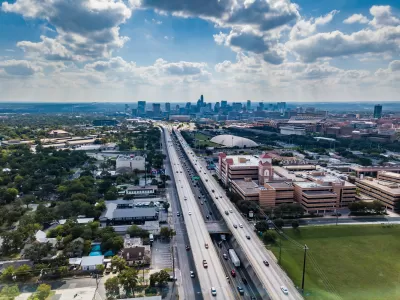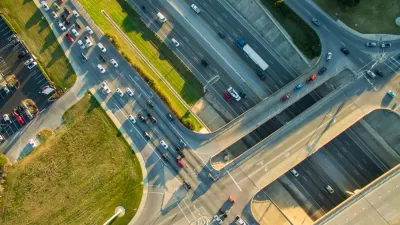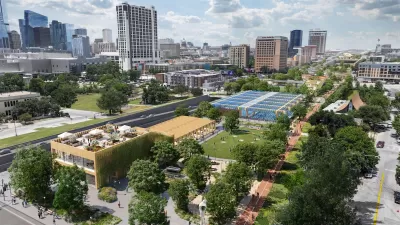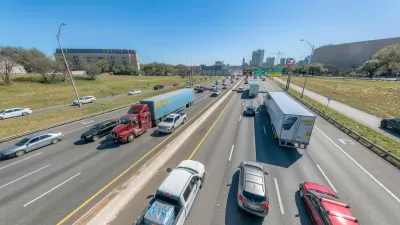In addition to new HOV lanes and a proposed boardwalk, TxDOT agreed to engineer the freeway for caps in some areas, but the city would have to fund their construction.

A letter sent by Austin mayor Kirk Watson to opponents of a freeway widening project outlines proposed changes to the Texas Department of Transportation (TxDOT)’s Interstate 35 expansion plan, which is being opposed by resident groups and some local officials.
According to an article by Nathan Bernier for KUT, “Adjustments to the once-in-a-generation project include the possibility of covering larger sections of the highway north of downtown, constructing a $25 million boardwalk on Lady Bird Lake and filtering stormwater runoff into the Colorado River.”
Bernier adds, “TxDOT's transformation plans include lowering the main lanes for much of the distance between Oltorf Street and Airport Boulevard. The City of Austin hopes to cover these lowered portions of the highway with "caps" — basically large decks — that could support buildings at least two stories tall. TxDOT won't pay for the caps, but will engineer the highway to allow for their installation.” The agency has agreed to lower a third portion to make way for a cap.
As part of the project, “TxDOT is set to construct a near half-billion-dollar drainage system, which includes a tunnel under Cesar Chavez Street that would direct stormwater runoff into the Colorado River near U.S. 183.” But according to the city’s Watershed Protection Department, “The current design would not have the capacity to treat all stormwater runoff.”
The article details other parts of the TxDOT plan, such as new high occupancy vehicle (HOV) lanes and the $25 million boardwalk along Lady Bird Lake that would replace other parkland that will be lost to the project. The expansion has faced staunch opposition from local residents, including three city council members, from the start.
FULL STORY: Austin's I-35 plans revised to include new cap and a $25 million boardwalk

Planetizen Federal Action Tracker
A weekly monitor of how Trump’s orders and actions are impacting planners and planning in America.

Congressman Proposes Bill to Rename DC Metro “Trump Train”
The Make Autorail Great Again Act would withhold federal funding to the system until the Washington Metropolitan Area Transit Authority (WMATA), rebrands as the Washington Metropolitan Authority for Greater Access (WMAGA).

The Simple Legislative Tool Transforming Vacant Downtowns
In California, Michigan and Georgia, an easy win is bringing dollars — and delight — back to city centers.

The States Losing Rural Delivery Rooms at an Alarming Pace
In some states, as few as 9% of rural hospitals still deliver babies. As a result, rising pre-term births, no adequate pre-term care and harrowing close calls are a growing reality.

The Small South Asian Republic Going all in on EVs
Thanks to one simple policy change less than five years ago, 65% of new cars in this Himalayan country are now electric.

DC Backpedals on Bike Lane Protection, Swaps Barriers for Paint
Citing aesthetic concerns, the city is removing the concrete barriers and flexposts that once separated Arizona Avenue cyclists from motor vehicles.
Urban Design for Planners 1: Software Tools
This six-course series explores essential urban design concepts using open source software and equips planners with the tools they need to participate fully in the urban design process.
Planning for Universal Design
Learn the tools for implementing Universal Design in planning regulations.
Smith Gee Studio
City of Charlotte
City of Camden Redevelopment Agency
City of Astoria
Transportation Research & Education Center (TREC) at Portland State University
US High Speed Rail Association
City of Camden Redevelopment Agency
Municipality of Princeton (NJ)





























